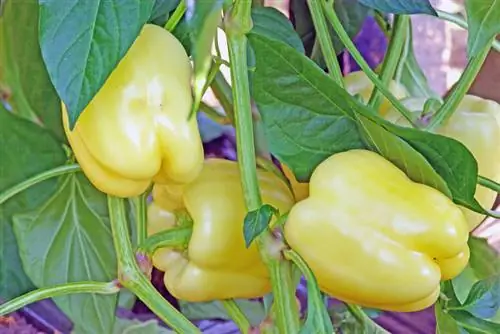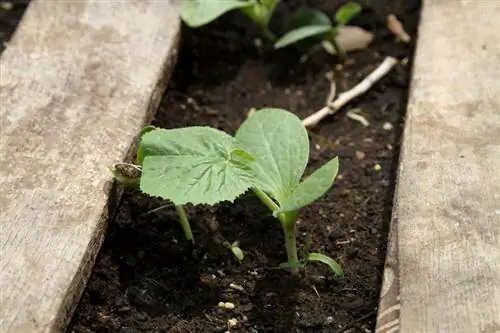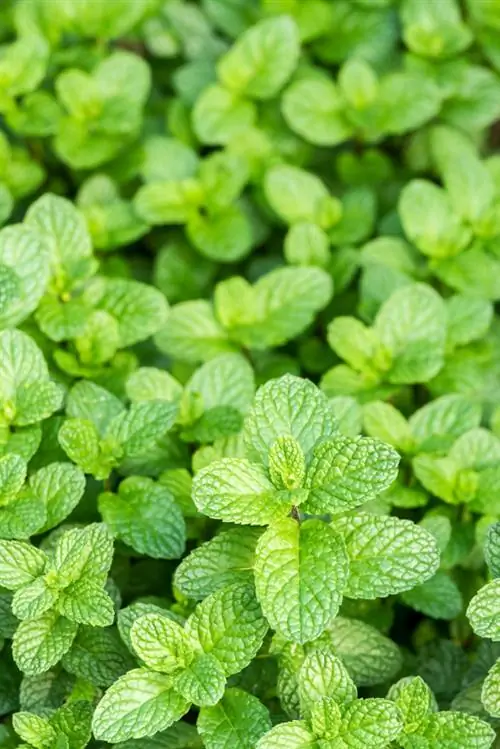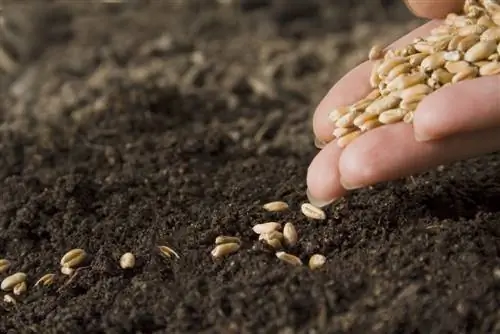- Author admin [email protected].
- Public 2023-12-16 16:46.
- Last modified 2025-01-23 11:21.
Planting the greenhouse depends on the desired type of use. The article shows you how to successfully plant your seeds in the ground and what care measures young plants need. Because: The more professional the sowing, the higher the harvest yield.
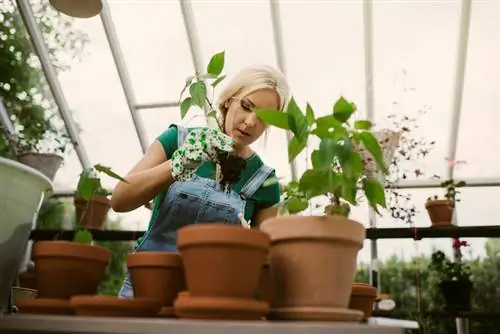
How to successfully plant the greenhouse?
When planting in a greenhouse, you should pay attention to high-quality seeds, optimal germination temperatures and appropriate plant spacing. Regular watering, targeted fertilization and avoiding conditions that are too humid promote the growth of young plants and increase harvest yields.
Once everything is in place after construction, the accessories have been put away and the right amount of light, shade and warmth has been provided, planting the greenhouse is the most beautiful task. Thesoil has been prepared, the seeds have been procured and a few bags of substrate soil are also ready.
High quality seeds for good growth
For everyone who wants to harvest seeds from the plants they have grown themselves in the future, be sure to use seed-resistant varieties instead of hybrids for the first sowing. Hybrid plants have the advantage that the harvest will be plentiful in terms of quantity. However, the seeds obtained from these plants also fundamentally change the genetic properties of the next generation and should therefore not be used for breeding.
Seed germination does not last forever
It is therefore better to make sure that the seeds used come from the last harvest if possible. Many manufacturers now offer plant seeds in so-called germ protection packaging. As long as the packaging remains unopened, the contents can usuallybe used safely even after several years. Some examples of germination during proper storage in the following table:
| Plant type | Germinability (years) |
|---|---|
| Dill | 2 to 3 |
| Beans | 3 to 4 |
| Onions | 3 to 4 |
| Radish | 4 to 5 |
| Cabbage & Kohlrabi | 4 to 5 |
| Tomatoes | 2 to 6 |
| Lettuce | 3 to 4 |
Planting the greenhouse with sowing
There are certainly only a few greenhouse owners who fill their house with purchased plants. So the first step is to sow, for which there are two different methods:
- Growing young plants in containers (pots or bowls) made of plastic or clay;
- The future young plant culture is sown directly in the greenhouse soil at the final spacing from the beginning.
In both cases, your substrate should not be excessively wet when planting in the greenhouse, but rather just moist - not just on the surface. The seeds are now placed evenly on the ground and as precisely as possible at the same distance as the young plants should later be. Older seeds can be scattered a little more densely as not every seed may sprout. The seeds are now carefully pressed towards the ground using a wooden board and“seed-thick” covered with loose greenhouse soil. When it comes to planting and other special features of the different crops, in addition to being on the safe side, be careful the description on the back of the seed bags.
From watering and pricking to germination
This would complete the first area of the greenhouse. At the end, water carefully without directing the watering jet directly onto the sowing. To ensure that the moisture in the soil or substrate lasts longer, the cultivated area can now be covered with two or three layers of garden fleece. Then you have to wait a few days before pricking. You can tell when the time is right when the seeds begin to sprout slowly but surely. Different speeds in sections and with mutual constriction. Very finely germinating seeds are now removed from the bed, but those that sprout too high should also be removed, so this work should be carried out with a little gardening skill and a portion of experience. This creates the basis for high-quality planting in the greenhouse, which ends up being as productive as possible at the end of the vegetation.
Legitimate question: What to plant and when does it germinate?
For a rough orientation, here is a small overview, which we have also enhanced for you with the optimal germination temperatures (€7.00 on Amazon). When planting in a greenhouse, it is advantageous to strictly adhere to thecorresponding temperature values.
| Seed (plant) type | Germination time (days) | Best germination temperature (°C) |
|---|---|---|
| Tomatoes | 5 to 15 | 20 to 25 |
| Peppers | 10 to 21 | approx. 25 |
| Lettuce | 6 to 10 | 15 to 18 |
| Cucumbers | 5 to 14 | 25 to 28 |
| Nasturtium | 7 to 14 | 20 to 25 |
| Celeriac | 14 to 21 | 22 to 28 |
| Onions | 14 to 28 | 18 to 25 |
| Beans | 7 to 10 | approx. 25 |
| parsley | 12 to 21 | approx. 25 |
| Leek | 12 to 28 | approx. 20 |
| Sage | 14 to 21 | 20 to 25 |
| Marjoram | 21 to 28 | 20 to 25 |
| Basil | 14 to 21 | 20 to 25 |
| Artichokes | 14 to 21 | approx. 22 |
| Pumpkin | 5 to 12 | 25 to 28 |
Planting a greenhouse also means fertilizing occasionally
In the first few days, seedlings feed from their own reserves, then they turn to the nutrients from the soil. If set correctly, it contains everything the future young plant needs to grow. Depending on the type of plant, you can also add phosphate, nitrogen and/or potassium oxide to promote growth when purchasing soil for pricking or sowing. You can recognize a lack of nutrients when planting in the greenhouse by suddenly slowing growth and the leaves appearing somewhat pale. TheAdding organic fertilizers helps prevent such symptoms. However, the applications must be made in good time, as the nutrients need some time in the soil before they are available to plants.
Tip
Watering, yes, but without causing major contamination of the young plantings. Leave the fresh planting's above-ground parts as dry as possible at night in order to prevent fungal diseases from establishing themselves in the early stages. And finally: Stale and not too cold rainwater is the trump card when planting in a greenhouse!


